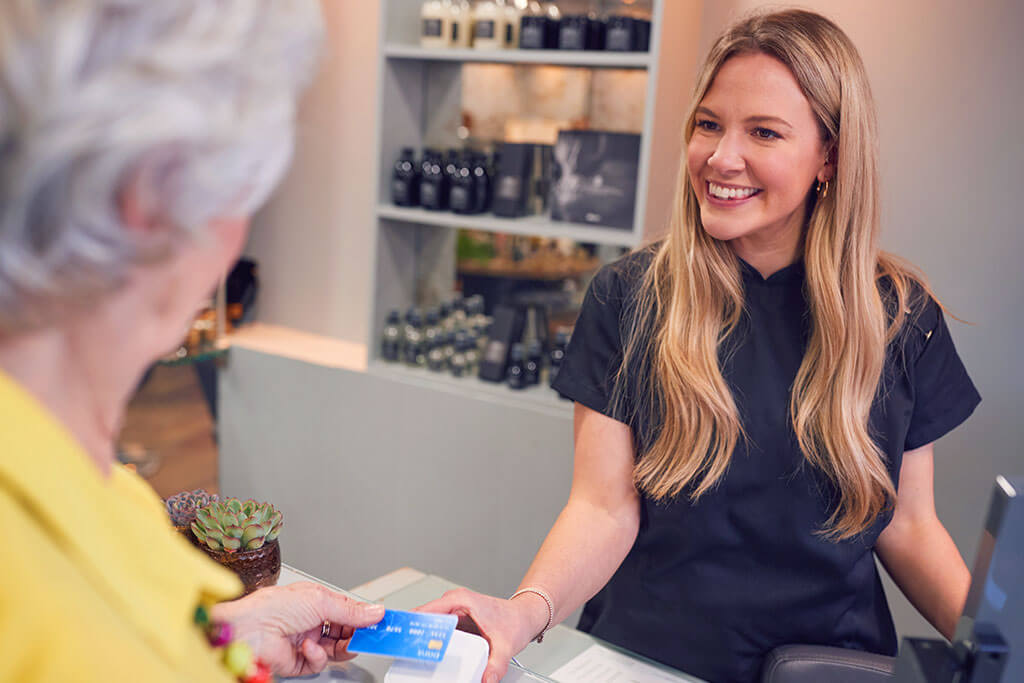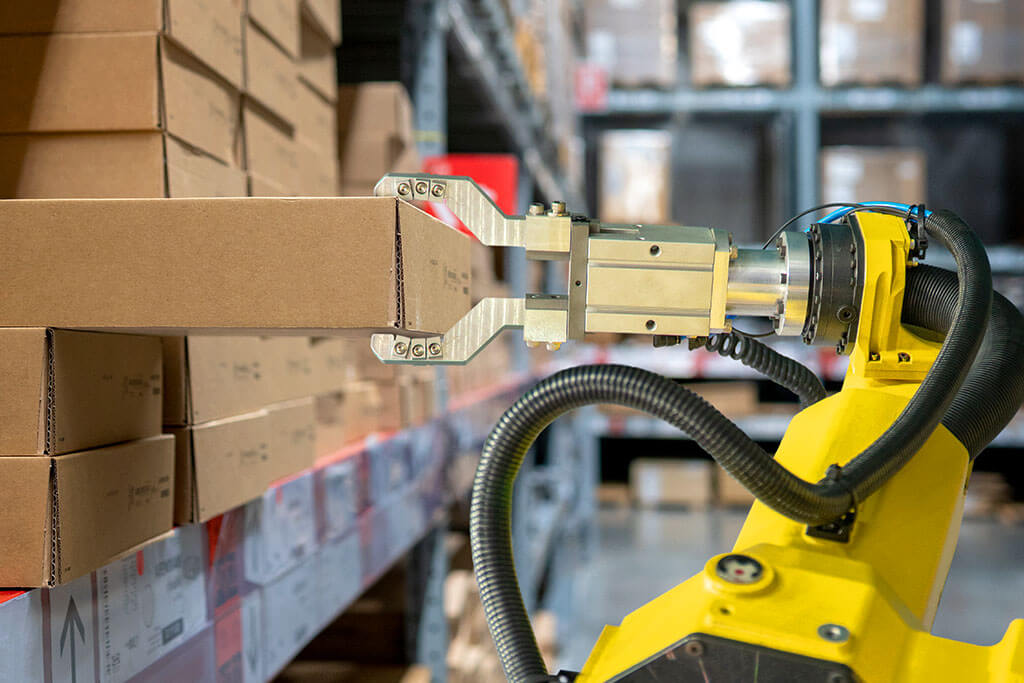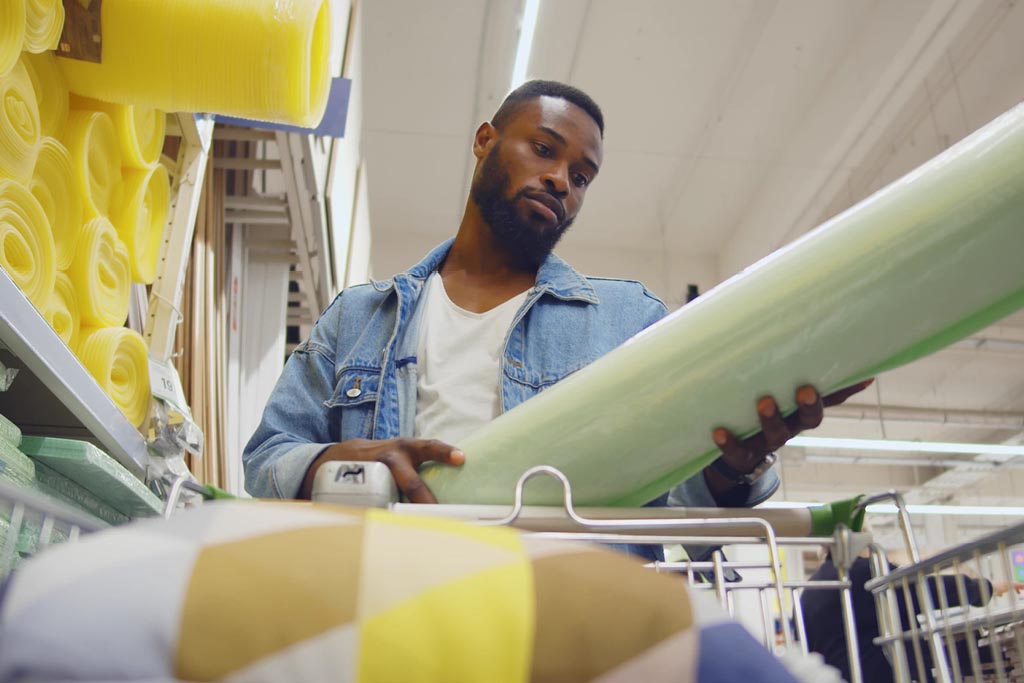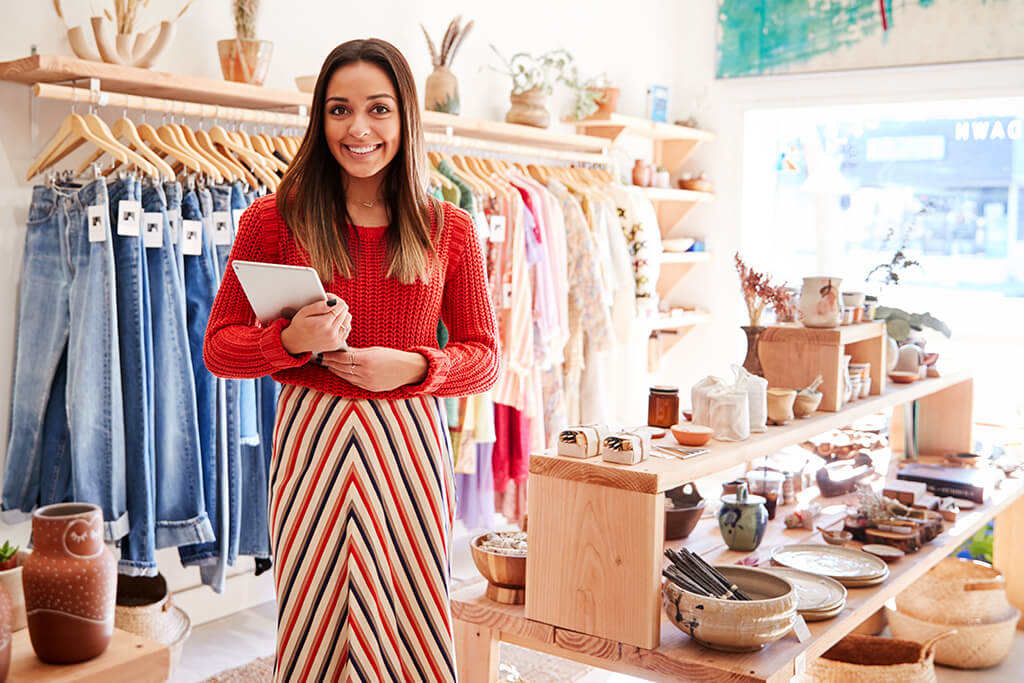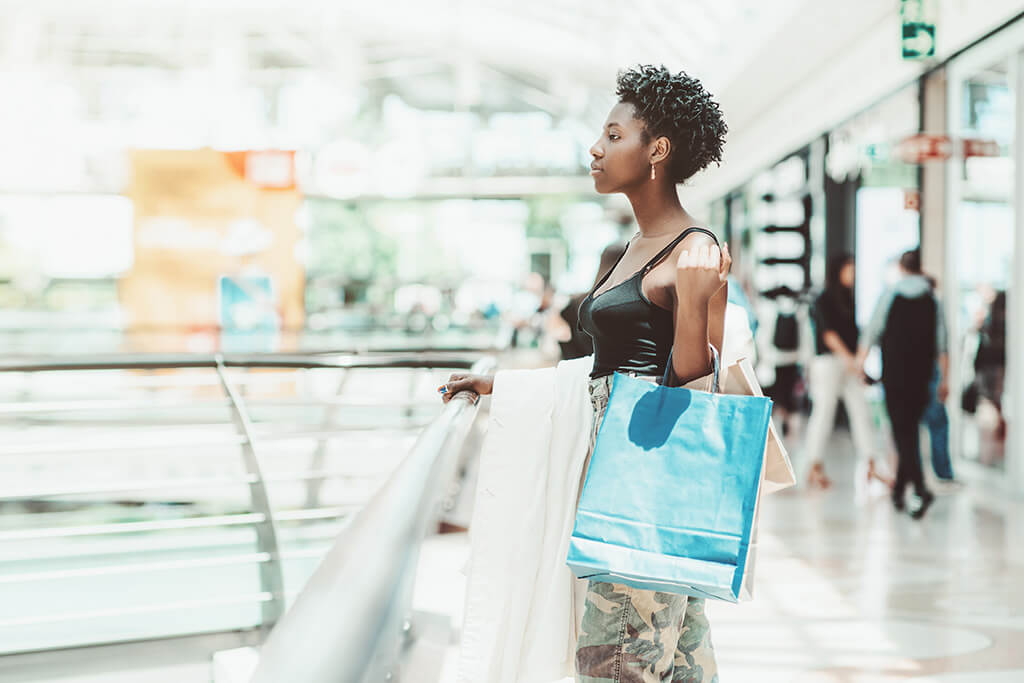Insights
What’s next for in-store retail tech?
6 minutes
15th September 2023
Share this article:
While many cash-strapped shoppers are turning to digital channels to save time and money and widen their shopping options, more people are returning to the high street in Q2 2023.1
18–24 year-olds now visit high street shops and shopping centres almost equally to shopping online, while people 65 and over and are spearheading the return to the high street.1
But what will they be greeted with?
In today's fast-paced digital era, the retail industry has undergone a remarkable transformation thanks to innovative technologies. Retail tech is not just about making operations more efficient – it has also revolutionised the way customers experience shopping.
Let’s look at some of these developments in more detail.
Shop vs. showroom
What’s the role of stores nowadays?
As well as being able to see, feel and try before you buy, more stores now provide an experience to entertain, engage or make it easy to buy then and there.
They need to do a bit of everything. And they need to work harder than ever to provide customers with a better shopping experience than they can get online if they want to draw more shoppers in store.
In the case of many stores across fashion, electronics and more, customers are treating shops more like showrooms, where they can handle the products and try things on.
People will often follow up by buying the clothes online, so there’s a real danger they might buy from a competitor. The process and experience needs to be frictionless to encourage them to purchase there and then.
Personal shopping gets even more personal
A good example is the ‘Guideshop’ store concept created by American men’s clothing chain Bonobos. Shoppers get a one-on-one experience with a personal shopper and they have one of everything in the shop to try on.
You get a summary of all the sizing, fit and style information you need to place an order, which is then delivered to your home via their ecommerce functionality. In-store tech enables staff to quickly get the information they need on stock levels and delivery times.
Taking this concept further, collaboration technology can enable shop staff to seamlessly contact head office or remote product experts, giving customers the best possible recommendations and experience.
With all the different shopping styles, from browsing, trying instore and then buying online to those who just want to shop as quickly and as cheapy as possible, retailers need to create experiences to suit their core audience’s shopping behaviours.
Give customers the wow factor
What in-store technologies are most likely to encourage people to visit stores?
32% want high-speed WiFi, 29% self-service checkouts and 26% a loyalty app to check for offers and discounts.1
These provide a great foundation. But in a world where it’s easy for consumers to buy everything they need online, stores now have to provide a shopping experience which attracts, engages and surprises them.
Apple blazed a trail with its clean, minimalist stores which give the feel of a luxury buying experience through the way products are displayed and sold. Customers can touch and give the products a test drive.
Powered by the latest network technology, experiential retail is becoming the norm, whereby retailers create an immersive and shareable experience.
The focus is on engagement and experience, which then drives sales.
Brand new on-brand experiences
Stores provide an on-brand experience as soon as customers walk through the door. Whether that’s a coffee shop or an Instagrammable opportunity, it’s important to understand what makes your customers tick.
But the mission to stimulate customers’ senses goes much further than that. Retailers are looking to defy expectations using the latest tech.
Practically, shoppers can use augmented reality apps to quickly find the location of products and more information about them without needing the help of staff. But what about using virtual reality (VR) headsets to immerse them in an engaging 3D digital environment while in store?
Nike celebrated its 50th anniversary last year with an interactive augmented reality display in 11 of its global flagship stores. And IKEA blends the digital and store experience so that customers can now use such headsets to enter a virtual room and see how furniture might look in their own homes.
Nobody enjoys queuing
It’s not all about the bells and whistles though. Retailers need to deliver a frictionless, efficient buying experience that doesn’t frustrate or irritate customers.
When it comes to the big purchase moment, staff can be armed with mobile point-of-sale (POS) devices to do it on the spot. After all, us British may be good at queuing, but we don’t relish it.
39% of people we surveyed said reducing queuing is the most important thing tech could help with in-store.1
With the internet at their fingertips, customers now come to stores expecting a wealth of information about products to be easily available, without necessarily having to ask.
What else can this product do? Where was it made? Was it made sustainably? Am I allergic to the ingredients?
Because access to knowledge is just a mobile phone search away, staff need to have access to the same information as customers. And retailers should give customers options to incorporate mobile phones into the buying experience and not just push them towards using instore digital kiosks.
Store devices can be unfamiliar so customers might prefer using their mobile. After all, they’re personalised, they know how they work and they don’t have to sanitise their hands after using them. It’s about giving the customer flexibility and capability.
Knowing your customer
Amazon is leading the way in Just Walk Out shopping. Using sensors to understand who you are, it can track what you’ve picked up and charge you when you walk out the store with no queuing or getting stuck at the tills. Lightning-quick connectivity and ultra-low latency are the key to providing the best experience here.
Of course there’s a time and a place for this type technology. It’s difficult to imagine buying a sofa this way but for certain grab-and-go products like groceries it makes perfect sense.
It’s about catering to your specific customers. If your customer base mainly uses cash then make sure they still can. If most of your customers prefer interacting with technology to human contact, enable it.
The more you know about them the more you can help them. From tracking heat maps to monitoring busy shopping periods, in-store analytics can help you identify a whole host of useful information, from dwell time to waiting time and more.
You can use this data to open more tills or have more staff on hand to deal with consistently busy periods.
‘How about this one?’
By automatically identifying a customer as they enter a store, staff can potentially look up what they’ve bought before, what size they are, greet them by name and have some tempting products ready for them based on previous purchases.
It’s about understanding who the customer is, which helps to provide a slick experience.
From personalised recommendations to seamless checkout processes, tech advancements are redefining traditional bricks-and-mortar stores, creating more engaging and satisfying customer journeys.
And it’s all underpinned by secure, reliable connectivity, whenever and wherever it’s needed.
Want more insight about retail tech?
Check these out next:
Want to speak to one of the team?
call 0800 064 3790
